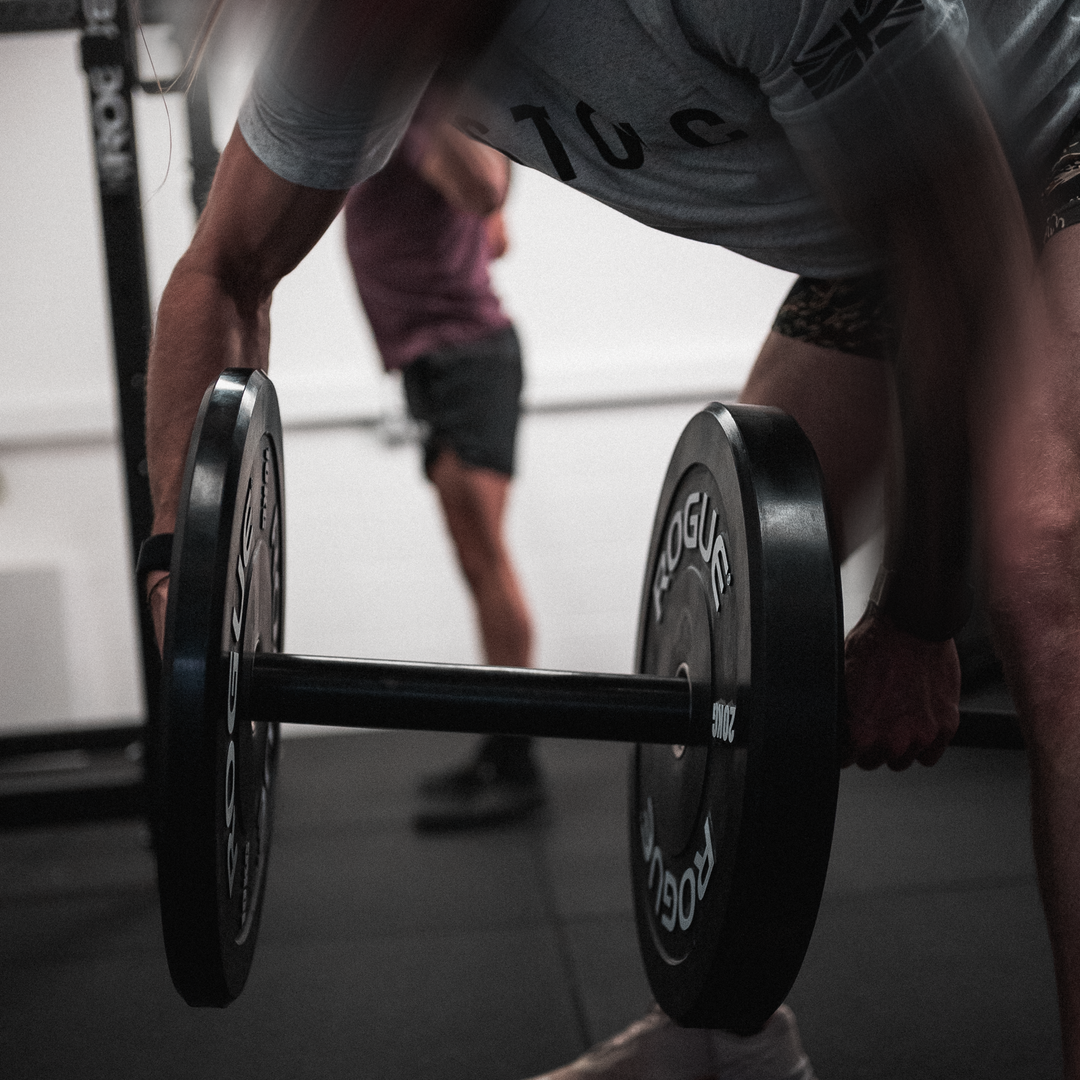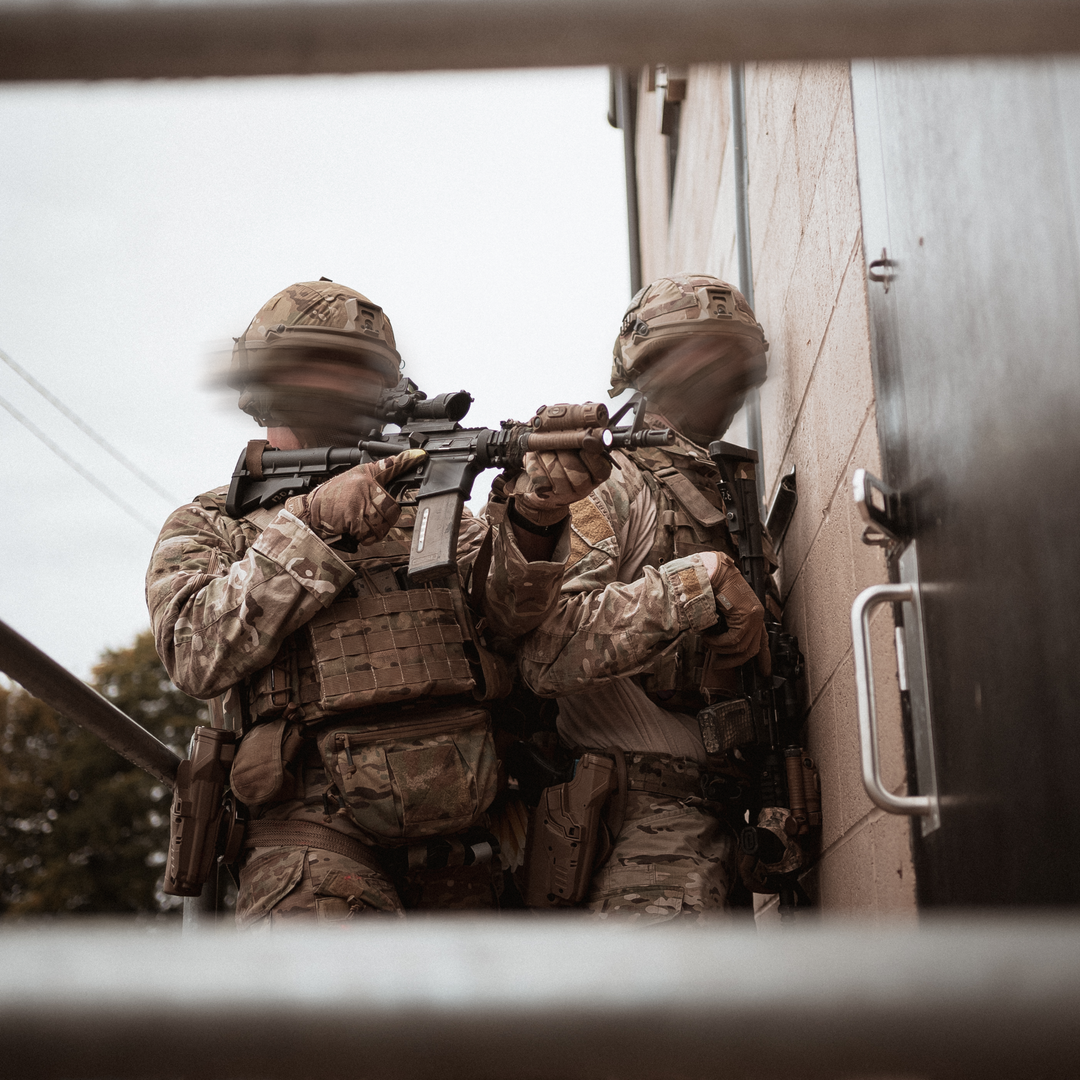WARMING UP OUR GSR APPROACH AND MODIFICATIONS FOR WHEN YOUR ARE SHORT ON TIME

Warming up for your training sessions should be a high priority. There are huge benefits for how much it improves your subsequent performance in training as well as helping you to prevent injuries. We’ve previously written about how to warm up for working sets using the movement you’re about to perform from a neural drive and movement pattern recognition point of view.
But what’s the best way to get the body moving in the first place that’ll give you the best returns on your training session? In this article, we will explore the benefits of warming up, our G.S.R. approach and what a gold standard warm-up might look like, as well as some modifications to help when you’re short on time.
The benefits of warming up before training sessions
The majority of injuries we experience in training are either overuse injuries or acute injuries that occur when we lift too much, run too fast, or perform too many repetitions of a specific movement.
Injury = Demand on tissue is greater than Tissue Tolerance/Capacity
Your warm-up should be your first preventative method against injuries like this. Athletes who performed a warm-up had a 51% lower risk of injury compared to those who did not warm up and those athletes who performed a sport-specific warm-up had a 41% lower risk of injury compared to those who performed a generic warm-up (Sports Medicine, 2018).
Another goal of a warm-up is to prepare your body and mind for your training session or skills performance by helping you shift from whatever state you were in prior to training, such as sitting for hours or having just woken up, into being able to physically apply yourself fully. Athletes who perform a warm-up report lower levels of stress and anxiety during training and competition than those who don’t warm up at all (Journal of Physical Therapy Science, 2017).
Many people’s gym warm-ups consist of doing a bunch of reps with an empty bar and maybe a couple of arm windmills and crossbody triceps stretches or hip swings and side bends. This is not going to adequately prepare you for a heavy bench or squat session (however, the empty bar reps can be a part of your warmup).
To perform a complete warm-up, you need to take different components of your training into account.
The overall goal of any warm-up should be to:
- Increase your body temperature.
- Increase your breathing rate, blood flow and oxygen delivery.
- Improving joint mobility, range of motion and joint capsule lubrication.
- Prime your muscles to reduce the risk of injury from moving or lifting cold.
- Increase neuromuscular coordination.
- Prepare your mind so that you’re focused on the training session.
Warming up can provide psychological benefits in addition to physical ones. A warm-up can help to reduce anxiety, improve focus, and elevate your mood, all of which can improve your performance. It can also serve as a mental cue, helping you to transition from whatever has been on your mind all day or your daily routine into the training environment.
Your warm-up can also act as a check-in with your body to see if there are any areas you could do with giving more attention to outside of your training session, such as tight hips or calves that might need some mobilising.
Our GSR approach for warm-ups
GSR stands for General, Specific, and Ramping. It’s our go-to template for warming up that makes sure you’re hitting everything you need to warm up efficiently and it’s a template that can be applied to any style of training session, be it gym based or field based.

General Phase
In this phase, you’re looking to raise your body’s temperature and increase your heart rate, breathing rate and blood flow. We recommend working on a piece of equipment such as a bike or rower in the gym for 5-10 minutes, starting slowly and building up your speed a little.
Time spent in this phase depends on your needs and the needs/demands of the session and environment. For example, if you’re about to go into a low-intensity session in a well-heated gym environment, you may only need 4-5 minutes in this phase. Conversely, if you’re going into a sprinting session outside in the cold, then spending slightly more time here getting your temperature up will benefit you more.
Studies recommend the most optimal strategy is to get your heart rate up to around 55-65% of your maximum in this phase, which equates to around 90-120 beats per minute for the majority of people.
It’s in this phase that you can start to shift your mindset towards your upcoming training session and go through the intentions of your training session.
 Specific Phase
Specific Phase
In this phase, you’re going to want to get more specific and a bit more dynamic with your movements. Here is where you can look at incorporating mobilisation elements such as a mobility flow or dynamic movements such as leg swings, high knees or walking lunges with rotations, to help to further warm up your muscles, increase your neuromuscular coordination and increase your range of motion.
The movement choices you make in this phase are going to be dependent on:
1 – What you need specifically to help prepare your body for the upcoming session.
2 – What the upcoming training session actually involves movement and intensity wise.
Everyone’s specific needs are going to be slightly different based on their mobility requirements and what they need to do to feel and be ready to train. Doing some controlled articular rotations with high tension through your hips may work for some people, for others, it may be that they need to go through a mobility flow at a higher tempo to get themselves ready.
Added to that you’ll want to consider what the training session actually involves. For example, if it’s a gym-based pull-up focussed session, then warming up your grip, elbows, shoulders and spine has more specificity here. However, if you’re going into a training session that involves a 4x400m sprint at near maximal intensity, then spending more time on mobilising your ankles, hips and torso is going to be a smarter and more productive option.
Depending on your needs, you’ll want to spend 5-10 minutes in this phase. A key point to remember here is that after you have spent the time warming up in the general phase, don’t then just sit around and let everything cool down again in this phase. Think about keeping your tempo up whilst going through this phase to then lead straight into the ramping phase.
Ramping Phase
You’re aiming to ramp up your nervous system/neuromuscular activation here. This phase should take you up to and into your first working set and should take the form of the first movement pattern or exercise coming up in your session with increasing intensity to ramp up your neuromuscular activation.
Just like in the previous phase, the movements and intentions here will be dependent on what the actual movement is that you’re going to be performing and the intention with which you are going to be performing it in the session.
Using the previous examples, if you are warming up to the 4x400m sprints at a near maximum pace, you’ll want to include incrementally increasing your running pace over short distances to really get you ready for the demand that the first set is going to place on your body. 3-5 sets of a 30-50m sprint where each set gets a little faster than the last, will set you up well to go straight into your first set of 400m.
For the other example of a pull-up-based session that starts with you doing 3 sets of 5 reps with added load, your ramping phase may take the form of 2-3 warm-up sets with 1-3 reps with increasing weight each warm-up set to ramp you straight into the weight and intention of your first working set.
The ramping phase can take anywhere between 3-10 minutes depending on the level of intensity you are looking to start the training session at and the movements involved.
It’s normal to be eager to get started with the main part of your training session. But if you want to make sure you’re tapping into these benefits, reducing the risk of injury and priming yourself for better performance in training, spending 5-15 minutes warming up is a relatively small buy-in.
 How to modify the GSR template when you’re short on time
How to modify the GSR template when you’re short on time
If you find yourself short on time for your training session but still want the benefits of warming up, then your routine should take the form of around five minutes of getting warmed up (General phase) and five minutes of mobilisation (Specific phase) that’s specific to you and your session.
After that, transition straight into your session but have the mentality that it may take a few sets for your nervous system to catch up with what you’re doing so gradually increase the weights you’re using initially.
You can also look at combining the general and specific phases of the warmup into a ‘mobility flow’ with a much faster tempo than you would if you were going through a flow for recovery purposes.
Going through these movements and positions will increase your body temperature, heart rate and breathing rate, but it will also get your blood flowing to working muscles and improve your joint mobility by working through the positions and movements that you’re going to be doing in your upcoming session.
This approach can take anywhere between five and 10 minutes in total, after which you can transition into your workout with the mentality of initially reducing the intensity for the first few sets.
Examples of how to apply GSR template
GSR example for a low rep squat emphasised gym-based strength session
| GSR Phase | Gold Standard Warm-Up | Limited Time Warm-Up |
| General Phase | 5-10 mins of cycling or rowing, increasing pace throughout to bring HR to around 120 bpm. | 3-5 mins of cycling, bringing your HR up to around 120 bpm. |
| Specific Phase | 5-10 mins worth of mobility flows with hip openers, ankle rocking, spinal cat/camels and close chain shoulder girdle rotations followed by horse stance Pallof presses. |
Kang Squats with rotations at the bottom and reverse lunges with contralateral rotations for 20 repetitions each. |
| Ramping Phase | Incrementally increase the weight on squats over 3-5 sets with half the reps in the working sets or less, up to the weight for your first working set. | None – be mindful that your nervous systems will need to warm up during the first few sets. |
GSR example for outdoor sprinting based session
| GSR Phase | Gold Standard Warm-Up | Limited Time Warm-Up |
| General Phase | 5-10 mins of jogging, increasing pace throughout to bring HR to around 120 bpm. | Combined general and specific – 3 mins jogging straight into 3 sets of 5 metres worth of reps of: Walking lunges with rotations, high knees, heel flicks, over/under fence, running bounds |
| Specific Phase | 5-10 mins of running specific movements: Walking hip openers/closers, high knees, heel flicks, lunges with rotations, walking single leg RDL’s | |
| Ramping Phase | Taking 3-5 sets to incrementally increase your sprinting speed over 30-50m distance. | None – progress slowly up in intensity, especially if starting with very high-intensity sets. |
GSR example for gym session beginning with a higher rep upper body push/pull superset
| GSR Phase | Gold Standard Warm-Up | Limited Time Warm-Up |
| General Phase | 5-10 mins of cycling or rowing, increasing pace throughout to bring HR to around 120 bpm. | 3-5 minutes of rowing, bringing your HR up to around 120 bpm. |
| Specific Phase | 5-10 minutes worth of upper body prep. Side-lying shoulder/thoracic openers, GH joint CARs, spinal cat/camels, KB arm bar positions, animal flow shoulder transitions. | 3 sets of 5 reps of a flow of yoga push-ups, side kick throughs each side, scorpion reaches and crab reaches. |
| Ramping Phase | Incrementally increasing the weight on both movements over 2-3 sets with less than half the reps of the working set, up to the weight for your first working set. | None – be mindful that your nervous systems will need to warm up during the first few sets. |
Wrap Up
With all the benefits to performance and reducing injury risk that comes from warming up, it should be an essential component of any training session or physical activity even when you’re pressed for time.
Using our GSR template will assist you in making easier and better choices on how to structure your warm-ups and the intentions of what you’re trying to achieve.
References
The Effects of Warm-up on the Lower Extremity Biomechanics of Jumping Activities: A Systematic Review. Journal of Sports Science and Medicine, 2019.
The acute effects of warm-up, static stretching and dynamic stretching on sprinting performance in male team sport athletes. Journal of Human Kinetics, 2013.
The effects of a warm-up protocol on post-exercise oxygen consumption in young adults. European Journal of Applied Physiology, 2019.
Effects of warm-up on physical and mental states in female basketball players. Journal of Physical Therapy Science, 2017.
The Effect of Warm-up on the Risk of Injury in Sport: A Systematic Review. Sports Medicine, 2018.
Warm-Up and Performance in Competitive Swimming. Sports Medicine, 2018.
The effect of different warm-up stretching protocols on 20-metre sprint performance in trained rugby union players. Journal of Strength and Conditioning Research, 2010.
The effects of different warm-up protocols on knee proprioception in male team sport athletes. Physical Therapy in Sport, 2012.




